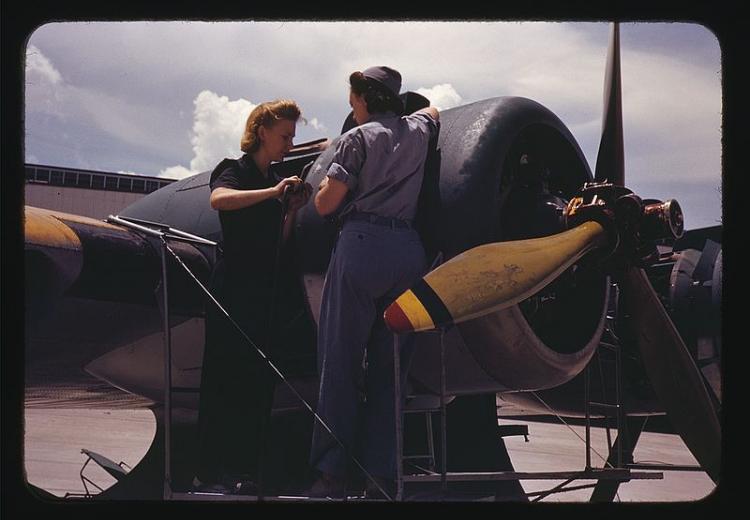Media Resource
BackStory: Women at Work

Photo caption
Bowen, a riveter, and Olsen, her supervisor, in the Assembly and Repair Dept. at the Naval Air Base in Corpus Christi, Texas (August, 1942).
This episode of NEH-funded BackStory—"Women at Work: A History"—includes several segments. Explore the lives of nineteenth century domestic workers, myths related to "Rosie the Riveter" during WWII, and changes and challenges in the twenty-first century. Each segment below includes analysis questions and prompts to draw connections to contemporary and historical issues.
A full transcript of this episode can be found at the BackStory website.
Rosie-Colored Glasses
Inside and Out
Under the Law
Protect and Exclude
R-E-S-P-E-C-T
Related on EDSITEment
Media Resource
BackStory: Shattering the Glass Ceiling
Lesson Plan
Women's Equality: Changing Attitudes and Beliefs
Media Resource
2018 Jefferson Lecture: Dr. Rita Charon
Teacher's Guide
